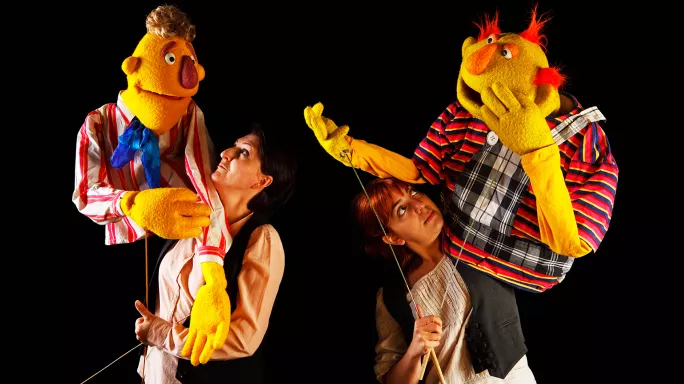- Home
- Teaching & Learning
- General
- How much prescription over how lessons are taught is too much?
How much prescription over how lessons are taught is too much?

Most education systems in developed countries have some form of prescription over what happens in a classroom when it comes to teaching.
Whether it is district-, state- or national-level curricula, or favoured approaches nudged by inspection systems or school-group leaders, the classroom teacher is never really fully in control.
In the US, more generalised prescription is coming into the system, with phonics and the science of learning pushing open the doors, and charter schools promoting prescriptive pedagogy. In Australia, a more laissez-faire approach is gradually being eroded at state and individual school group or school level.
Pedagogy and lesson planning
In international schools, meanwhile, strong brand identity objectives are leading to more control across school groups.
And, in England, the growth of the trust system and an embrace of cognitive science has, some argue, increasingly constrained teachers.
Many trusts, searching for a minimal level of quality across schools, have turned to centralised lesson formats and curricula. Feeding into that are pointers from cognitive science about how best to structure learning - and some teachers have self-restricted themselves to those pointers, too.
Teacher autonomy
For some, this level of prescription has gone too far. Sir Kevan Collins, a Department for Education advisor, told a conference in November that teachers had never been more “enslaved” in some classrooms.
“I think we’ve sometimes slipped into a shallow compliance culture where you see people being told what to do down to the degree of the slide stack you’re going to use in every lesson,” he said.
How much prescription, then, is too much?
Dangers of prescription
Dr Douglas Yacek, an educational researcher at Technical University Dortmund, Germany, who focuses on student engagement and transformative teaching, warns that there is a danger of causing tedium among both teachers and pupils should lessons become too homogenous in style and approach - both across single teacher’s lessons or across multiple lessons in a school day.
He explains that we now have a multitude of engaging and research-informed approaches to pick from to enable a diversity of experience for both teachers and pupils.
He gives the example of strategies such as literature circles - small student-led reading groups - and the “think-pair-share” routine, in which students first consider a question or topic independently before teaming up with a nearby classmate to discuss their idea, and then sharing their combined knowledge with the rest of the class. Such techniques allow students to adopt greater autonomy for their learning, which should, in turn, enhance engagement.
Science of learning
Elsewhere, routines influenced by cognitive science have been introduced to give students a lesson diet tuned to optimise their cognitive load so they don’t become overloaded and disengaged. In addition, lessons are carefully planned to ensure a student feels the right levels of success and challenge, meaning a sense of achievement can fight through any feelings of tedium.

Unfortunately, Yacek has found that certain picks from the approaches above are often becoming the template for every single lesson and that this can counter the positive attributes attached to them.
“It’s a sort of paradoxical development,” he says. “I have observed teachers over and over again using these methods. There’s a monotony in the diversity of these instructional methods. The students sort of roll their eyes, thinking ‘Here’s another think-share-pair’.”
Approaches to teaching
He worries, also, that an overemphasis on applying these methods has caused teachers to lose their individual pedagogical style.
“It’s a painting-by-numbers approach to teaching - it’s very rigid,” he says. “With these approaches, you may be missing the number one feature of an engaging instructional environment - which is your passion and your desire to create the kind of lesson that shows students that what they are learning has the capacity to enrich their lives.”
In many institutions, a teacher’s flair may be actively discouraged, he says, since it may seem like a distraction from the evidence-based strategies that have attempted to take a more objective approach to education. Yacek says the really transformative teachers know when and how to forge a different path.
“What I see time and again in these effective, transformative teachers, is that they are rule breakers,” he says.
Curiosity and learning
My conversation with Yacek makes me think of some research by Dr Susan Engel at Williams College, Massachusetts. A developmental psychologist who specialises in curiosity, she has found that teachers are often so worried about veering off-topic that they shut down any discussion that does not relate to the specific demands of the syllabus.
In her book The Hungry Mind, Engel describes a study exploring how this affects students’ experience of what they are learning.
It took place in science lessons exploring the principle of buoyancy. The children were given a simple task: to drop a raisin into a mixture of vinegar, baking soda and water, to see if the bubbles would make it float.
In half the trials, Engel’s student Madelyn Labella set out the procedure and then left the children to complete the activity. But in others, she deviated slightly, by picking up a Skittle sweet and saying “You know what, I wonder what would happen if I dropped this instead?”
In the rest, Labella simply cleaned the work area.
Scripted teaching?
“In other words,” Engel writes, some of the children saw the adult/teacher show interest in exploring further and deviating from the script, while others did not.”
It was a tiny change in the procedure, but it had a large effect on the children’s behaviour throughout the lesson.
“Children who had seen Madelyn do something unexpected and off-script, who had seen her display a little burst of curiosity (albeit a fairly tame ‘burst’), connected to the materials and the activity with more engagement and interest,” Engel explains.
But how many teachers would allow themselves to act in this way? Engel suspected that a “hurried sense of obligation to requirements gets in the way of curiosity at school”.
Teach to the test
To test this possibility, she set up a new study that flipped the script, so that the adults’ behaviour was under scrutiny, while the children acted as Engel’s accomplices.
Working with Kellie Randall, Engel recruited a sample of teachers and asked each one to lead a child through the “bouncing raisins” procedure. As they were briefed about the task, half the teachers were told “Here are the materials, so that you can learn about science”. The others were told, “Here are the materials, so you can help the student fill out the worksheet”.

At one point in the activity, the child - trained by Engel - decided to drop a Skittle into the bubbling liquid to see what would happen.
Some of the teachers embraced the small sign of curiosity, saying “Oh, that’s cool. How’d you get that idea?” or “Hm, I wonder if that will be the same as the raisin”, while others displayed impatience, saying things like “Wait a minute. That’s not part of the activity”.
This discouragement was much more likely if they had been told that their aim was to “fill out the worksheet”. The prompt had shifted their focus from teaching the principles of science to ticking administrative boxes.
Risks of prescription
Interestingly, when the teachers were debriefed about the purpose of the study, Engel found that many were completely unaware of their discouraging behaviour; most believed that they were very good at championing curiosity in the classroom.
“There are also powerful, somewhat invisible forces working against the expression and cultivation of curiosity in classrooms,” Engel writes. “Two primary impediments are the way in which plans and scripts govern what happens in most classrooms, and the pressure to get a lot of things ‘done’ each day.”
This is not to say anyone is recommending complete freedom to teachers. It’s more that there are risks attached to prescription that need to be better recognised and mitigated.
Power of routines
Indeed, there are clear advantages to establishing a routine, argues Steven Higgins, an emeritus professor of education at Durham University.
“I think the evidence is really clear that some structure is essential,” he says. “If every teacher had completely different expectations for how the students behave and organise themselves in lessons that, to me, would be a recipe for chaos.”
Higgins is the lead author of the Sutton Trust/Education Endowment Foundation (EEF) Teaching and Learning Toolkit, which outlines the evidence behind 30 strategies. Building a repertoire of familiar activities, he says, makes practical sense and is likely good for outcomes.
“If you repeat techniques, the students get used to them, so it’s often easier for them to maintain pace, because they know what they’ve got to do,” he says.
But teachers should still be given flexibility within those boundaries, he argues.
Flexible approaches
“You’ve got to think carefully about what those structures enable, and what they limit - because they do both.”
Too rigid a routine could be highly damaging to everyone’s engagement, he suggests. “The agency of the teacher and the student, for me, is central to the teaching and learning process.”
Like Yacek, he suggests that over-used approaches can lose their power with time. “The novelty wears off.”
He compares it to cooking. “If you always eat the same dish, it’s repetitive. You want to offer the same level of nutrition, but with different meals with different tastes.”
We can get too preoccupied with ‘what works’ and forget context, he adds.
“It’s not really a question of whether a technique works or not,” he argues. “It’s a question of ‘What is this good for?’ and ‘At what stage can I use it again?’”
Teaching best practice
Experienced teachers, he says, will often be able to sense when their students need a change of pace before their attention begins to drop. “It’s a level of expertise that’s quite difficult for them to articulate,” he says.
Higgins fully acknowledges that there may be wide disagreement about the amount of structure that a school should impose, and the amount of freedom a teacher will choose to design their lessons - but the best approach almost certainly lies somewhere between both extremes.
“It’s human nature to polarise, but when people are arguing about A and B, the answer is never A or B,” he says. “It’s a question of how much of A, and how much of B - otherwise they wouldn’t be arguing about it.”
Finding the sweet spot
That striving for balance is very much happening at a school level. In a recent article for Tes, Matt Carnaby, director of curriculum and assessment at Astrea Academy Trust, explained that it is important to separate curriculum and product.
“By ‘curriculum’, we mean the intent, the rationale, the sequence and the content, as designed by our expert subject communities (made up of heads of department and teaching teams),” he wrote. “By ‘product’, we mean anything that is born from the curriculum, such as a booklet, teacher guide or other resource.”
He explained that in order to enable autonomy at a classroom level, a teacher needs space for that engagement. Fidelity to a common curriculum, he argued, means space for thinking, reflection and adaptation of the products.
“By designing curricula and then allowing space for thinking about the products, we hope that we can prioritise the creation of fruitful encounters,” he concluded.
Meanwhile, Becks Boomer Clark, CEO of Lift Schools, recently wrote that “what we are trying to do is re-establish that agency for teachers and headteachers”.
“We create the conditions for them to innovate. To create joy and surprise in the classroom. It has become too staid and predictable in many schools,” she explained.
No good being ‘too prescriptive about prescription’
In the international market, Daniel Jones, chief education officer at GlobeEducate, explains that the balance is sought by demonstrating best practice strategies through workshops on high-impact teaching, but giving teachers the “autonomy to teach in the way they feel is most appropriate”.
“Teachers may use the strategies as they see fit,” he says. “At the same time, we encourage them to reflect regularly on their practice and to involve their students in sharing feedback about how they feel about their lessons.”
Dr Simon Camby, group chief education Officer, Cognita, takes a similar view. “At Cognita, we require each school to have an evidence-based pedagogical framework to set clear expectations about what makes the difference in teaching and learning. [Then] our principle-led framework requires teachers to have professional autonomy and take ownership in their context.
“For us, the work between the teachers and their students is where the magic of learning takes place with a strong combination of relationships (social and emotional) alongside academic (cognitive) learning. In summary, our approach is a blend of group-wide guidance, applied and implemented by expert teachers who know their students really well.”
In Australia, Jon Cole, a teacher in Australian Capital Territory, explains that several states provide development opportunities for teachers to use a common set of high-impact teaching strategies, while encouraging grassroots collaboration by teachers with varied focuses for individual schools and clusters.
Meanwhile, David Van Tol, a head of History at a school in Sydney, says that while schools have “fixed boundaries to move within”, heads of department have flexibility. He does have recommended lesson templates but his team are “free to use them, and some do, but I don’t insist all lessons follow my planned path”.
While no one spoken to necessarily believes they have got the balance perfectly right between prescription and autonomy, what all agree on is that the balance is unlikely to be at a fixed point: certain teachers, at certain times, in certain contexts will need more or less prescription.
So while being aware of the risks of prescription is certainly something everyone feels we could be more aware of, and should debate, it’s clear being too prescriptive about prescription is unlikely to be a positive option.
David Robson is an award-winning science writer. His latest book The Laws of Connection: 13 Social Strategies That Will Transform Your Life (Canongate) is out now. The Tes Editorial team contributed additional reporting to this piece.
Keep reading for just £1 per month
You've reached your limit of free articles this month. Subscribe for £1 per month for three months and get:
- Unlimited access to all Tes magazine content
- Exclusive subscriber-only stories
- Award-winning email newsletters
topics in this article



